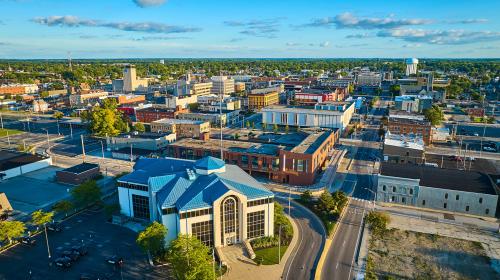Many are familiar with the “tragedy of the commons”: the idea that individuals, acting according to each one’s self-interest, may act against a community’s long-term interests by depleting a common resource. But what of its opposite, which for lack of an antonym I call the “un-tragedy of the commons”—when individuals advance a group’s long-term interest by creating and nourishing a common resource?
The real estate world has plenty of examples, such the High Line in New York, which has already generated over $2 billion in private investment, often doubling the values of adjacent properties.
I spoke this week to the Urban Land Institute on another commons for this century, abundant bandwidth. While some incumbent broadband providers argue consumers don’t need faster speeds, markets are already recognizing the added value of the abundant bandwidth that comes with fiber. Studies indicate homes connected to fiber enjoy a market value $5,000 greater than equivalent homes limited to just cable and copper. The presence of next generation networks is now a leading requirement for economic development recruitment. A recent Fiber to the Home Council study showed a $1.4 billion gain in GDP by 14 communities with widely available fiber.
I also discussed lessons from Gig.U, an effort that has led to over two dozen university communities obtaining, or moving toward obtaining, such networks.
First, while most municipal officials understand that everything a community does 10 years from now will be affected by the quality of the broadband networks it uses, they don’t yet understand how many things communities do today will affect the broadband it has 10 years hence.
Second, if cities don’t develop plans to get on the map of gigabit speed America, those cities may fall off the economic map. Soon there may be a split between cities who have the choice of cable vs. copper and those who enjoy the choice of cable vs. fiber. If a mayor doesn’t have a plan to be in cable vs. fiber camp, overall development dollars will be at risk.
Third, cities need to recognize the economic reality that we buy broadband as a community, not individually.
I closed by noting that if there is any audience that should understand the importance of the creation of the commons and how to do it, it should be the real estate industry. The mantra of the business is “location, location, location.” What makes one location superior to another is not an individual building, but the clustered activity that a location shares. Developers, who know how to work with governments to create a commons, need to start thinking creatively to make sure everyone in and surrounding their developments has access to that faster, better, cheaper bandwidth that will be the table stakes for where people want to live and work in the gigabit era.
The full remarks can be found here.



Commentary
Fiber and the Un-Tragedy of the Commons
November 3, 2014